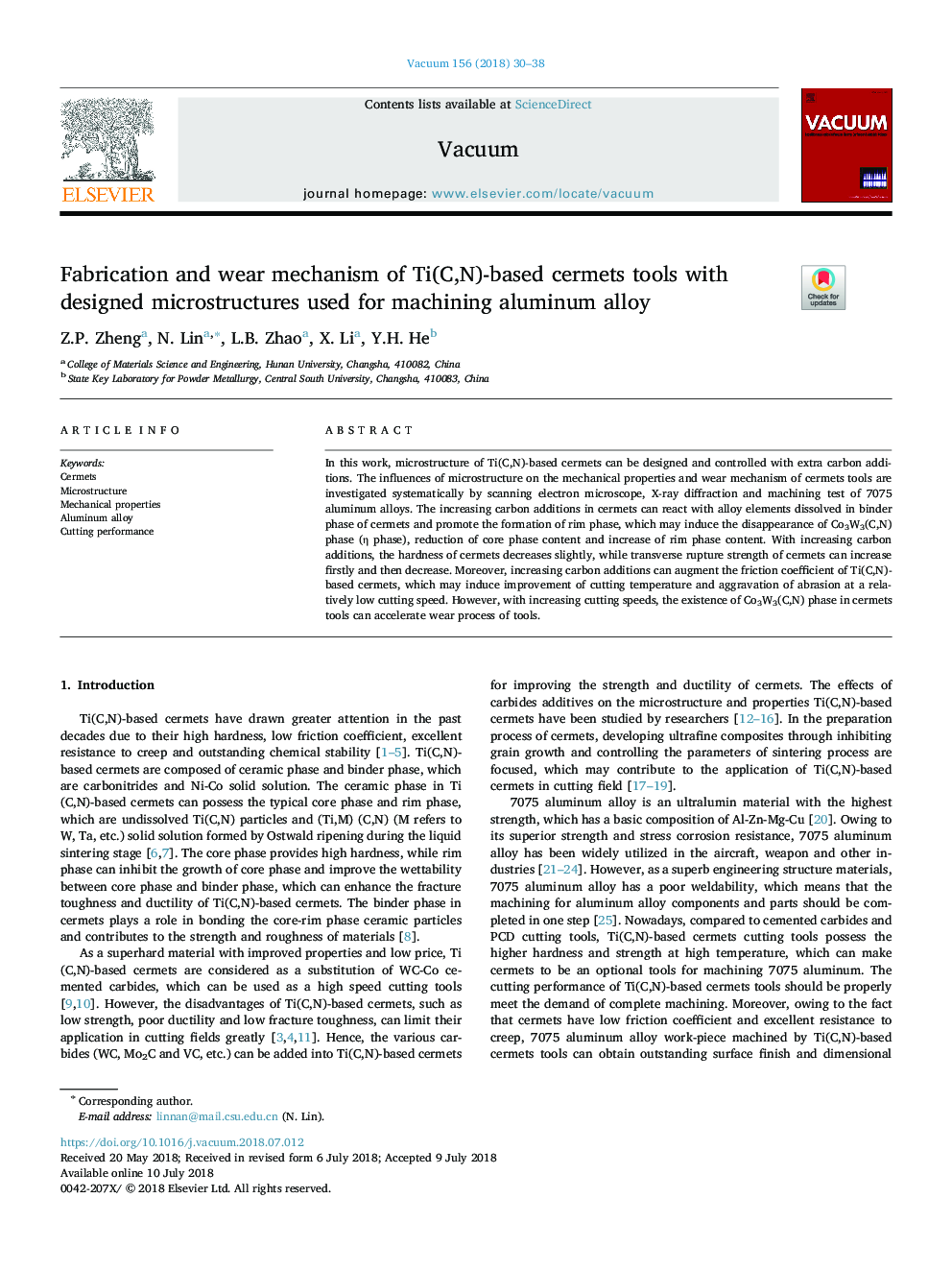| Article ID | Journal | Published Year | Pages | File Type |
|---|---|---|---|---|
| 8043980 | Vacuum | 2018 | 9 Pages |
Abstract
In this work, microstructure of Ti(C,N)-based cermets can be designed and controlled with extra carbon additions. The influences of microstructure on the mechanical properties and wear mechanism of cermets tools are investigated systematically by scanning electron microscope, X-ray diffraction and machining test of 7075 aluminum alloys. The increasing carbon additions in cermets can react with alloy elements dissolved in binder phase of cermets and promote the formation of rim phase, which may induce the disappearance of Co3W3(C,N) phase (η phase), reduction of core phase content and increase of rim phase content. With increasing carbon additions, the hardness of cermets decreases slightly, while transverse rupture strength of cermets can increase firstly and then decrease. Moreover, increasing carbon additions can augment the friction coefficient of Ti(C,N)-based cermets, which may induce improvement of cutting temperature and aggravation of abrasion at a relatively low cutting speed. However, with increasing cutting speeds, the existence of Co3W3(C,N) phase in cermets tools can accelerate wear process of tools.
Related Topics
Physical Sciences and Engineering
Materials Science
Surfaces, Coatings and Films
Authors
Z.P. Zheng, N. Lin, L.B. Zhao, X. Li, Y.H. He,
